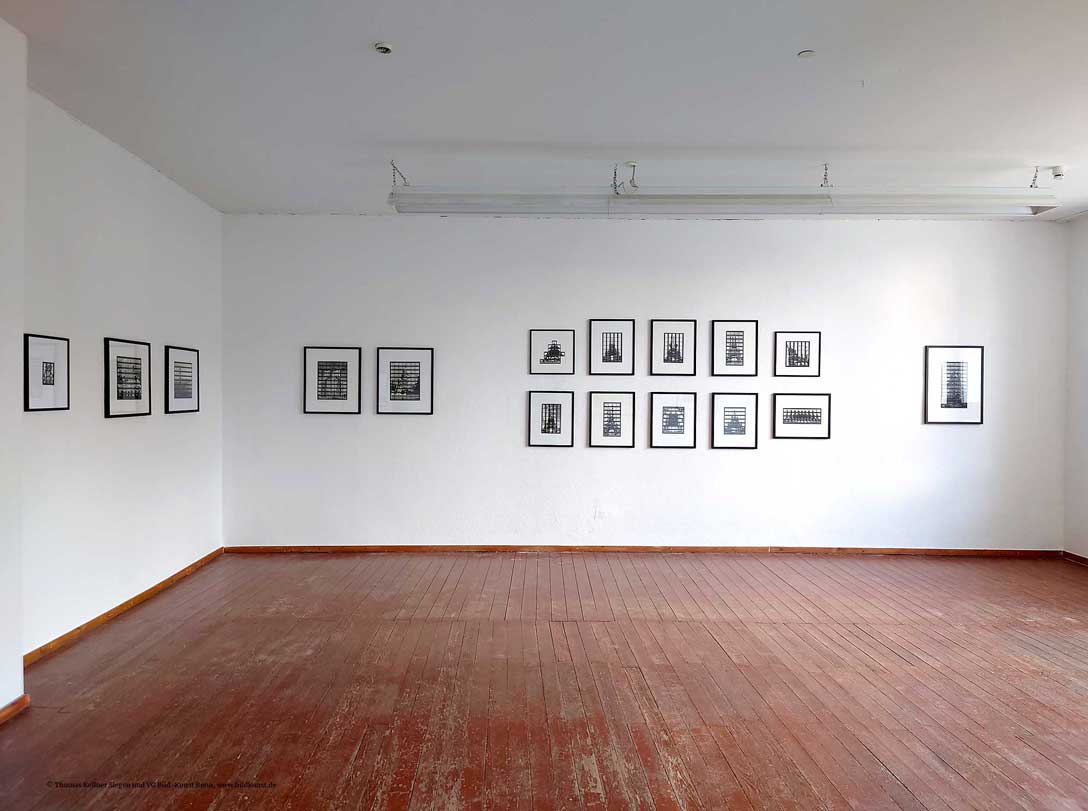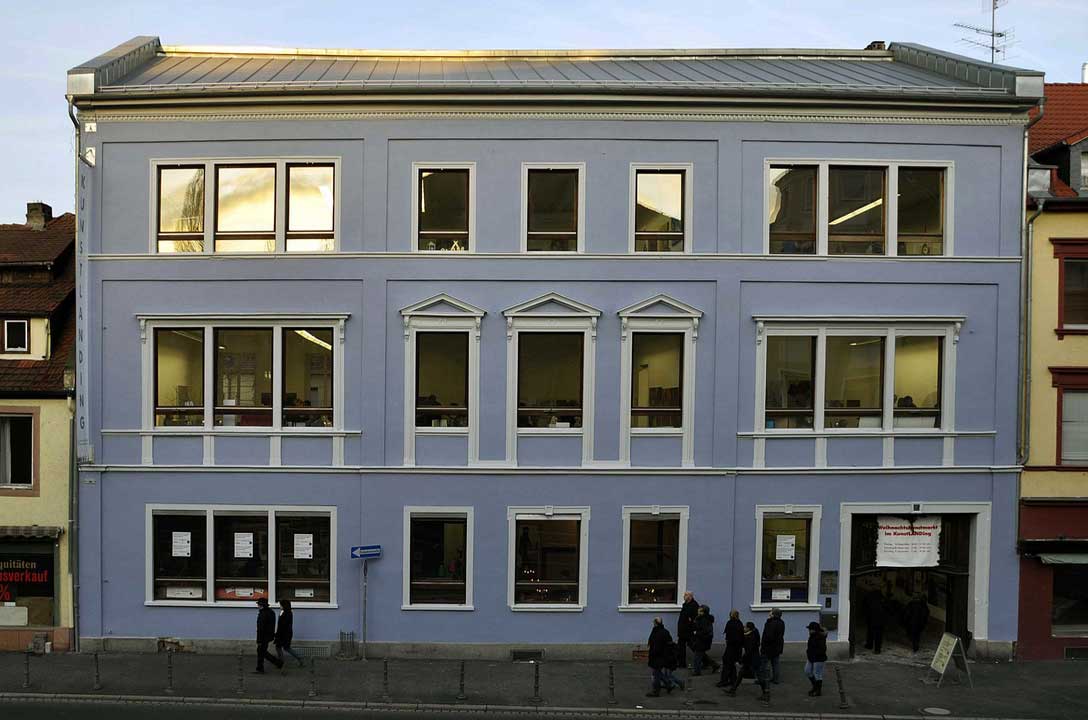
City Symphony
Alfred Döblin's novel Berlin Alexanderplatz (1929) and Walter Ruttmann's film Berlin - the Symphony of the Big City (1927) brought the city in its diverse reality of life and dynamics into the focus of art. In the exhibition Großstadt Symphony (Big City Symphony), which started on July 25, the three artists Tom Christoper (born 1952), Detlef Waschkau (born 1961) and Thomas Kellner (born 1966) each offer a different contemporary approach of fine art to the big city.
City and its symphony
When we speak of a large city, we are talking about a city with at least 100,000 inhabitants. In reality, however, there are many more factors that make a big city look like a major city. When we think of world-famous examples such as Berlin, New York and San Francisco, we do not only think of the large number of inhabitants, but also of the special characteristics of the cities, such as the architecture, landmarks and the never-standing still life in the big city. These individual parts can be understood as a piece of different tones. All the people, buildings and facilities do not exist side by side, but are an ensemble of different elements. Therefore, it is obvious to connect the big city with the symphony. A symphony is characterized by a totality that allows different types of details to impressively interact with each other. This way, the individual parts of the city can be combined into an orchestra and create a harmonious symphony of the big city.
Three artisans and their symphony
The American painter Tom Christopher, known for his expressionist style, presents the symphony of the big city of New York to the visitor. With bright colors, he gives the metropolis and its skyscrapers a dynamism on canvas and paper. Hanover-born artist Detlef Waschkau provides his wooden reliefs of the major cities of Osaka, Beijing and New York. The combination of sculptural and painterly styles creates a multi-perspective view of people and architecture, reflecting the coexistence and symphony of urban elements. The Siegen-based fine art photographer provides his Black and White work of famous landmarks. This includes composite photographs of buildings such as the Golden Gate Bridge or the Eiffel Tower in Paris. These were deconstructed and reconstructed from new perspectives. In this way, he gives the landmarks vibrancy and rhythm. However, the big city symphony is not just an exhibition of three different works. Although the artists have worked up different styles and metropolises, these works can be understood as a harmoniously interacting composition and Opus.
With the Großstadt Symphonie exposition, visitors of the Kunstlanding have the opportunity to experience the oeuvres of world-famous cities and buildings in Aschaffenburg and to get in touch with their symphony.
Biography of the artists in Symphony
It is his enthusiasm for New York's urban life that influences Tom Christopher's choice of motifs, inspiring him to always look at new things. New York's skyscrapers as well as buses, taxis, cyclists and pedestrians are the subjects of his works. Christopher's pictures tell stories as well as little anecdotes from everyday life. Again and again, he picks out the individual from the hectic mass of people with his or her story: the courier who is just able to hold on to his bike in the hectic traffic; the pedestrian who saves himself from the onrushing car with a leap; the rubbish collectors who roll away the smoking waste.Tom Christopher begins a painting with thin graphite strokes. They penetrate people, cars and buses and stretch a kind of construction net across the entire canvas. The still visible traces of this fine net include the "social factory" woven into the metropolis of New York.Here the protagonists in Christopher's urban dramas are entangled with each other.The fluid brushstrokes, the courage to leave blank spaces on the canvas and the bright colours lend the themes pace and movement. Over and over again, he succeeds in transferring the dynamics of the big city into the pictorial event as well as visualising the atmosphere, the colours and the sounds in his works.In 1993, Tom Christopher was a lecturer at the Parsons School of Design in New York. He conducted a project with the Fashion Institute of Technology in 2019: "The future is massive". Here, virtual art filled with colour was created to offer opioid patients an escape from their pain and anxiety. In 2020, his paintings were exhibited at the Laverdin Gallery under the motto "Life Before A Pandemic". In this cycle of works, Tom Christopher also talks about the "normal and dynamic hustle and bustle of the city of New York and gives the viewer a piece of normality in times of the pandemic.Through exhibitions in the gallery as well as the presentation of his paintings at fairs in Frankfurt, Cologne, Karlsruhe, Zurich, Miami, Palm Beach and Chicago, worldwide collections have also become aware of him. His works are represented in numerous museums and private art collections.
Text courtesy Galerie Barbara von Stechow
With great persuasiveness and astonishing topicality, the sculptor and painter Detlef Waschkau dedicates himself to the traditional genre of the painted street scene. He translates the familiar motif of life in the big city into the visual language of the 21st century and offers the viewer a lively image that corresponds to the permanent transformation and increasing uniformity of the metropolises.On the road in Europe and Japan, Beijing, New York, he becomes a narrator who, with great pleasure in detail, assembles urban living spaces from many motifs. In his works, a "livestream" becomes visible, which lives in its energetic mixture of short sequences in the individual image layers and whose actors radiate individual dynamics and boundless mobility. In Detlef Waschkau's work, the city mutates into a stage for a young generation that glides weightlessly through architecture and topography - equipped with modern accessories and always connected to electronically transmitted information from mobile phones and iPods.
Elke von der Lieth
Thomas Kellner was born in Bonn in 1966. He studied art, sociology, politics and economics at the University of Siegen. In 1996 he received the Kodak Young Talent Award, which encouraged him to pursue a life as an artist. Since then, Kellner has lived in Siegen as an artist and curator of photographic exhibition projects. In 2003, he was appointed to the German Society for Photography (DGPh). Since 2002, the fine art photographer has shown his work in solo exhibitions in Germany, Australia, Russia, China, France, Poland, Denmark, Brazil and in the USA and has been involved in numerous group exhibitions and publications. His work is represented in major private and public collections. He is also known for his paintings of seemingly dancing architecture of worldwide landmarks. His work has been described by Prof. Dr. Irina Chmyreva as a unique "visual analytical synthesis". This involves taking not just one image, but many planned ones in series on film to bring them together into arcs of contact. His creative process involves construction, but the finished work is more like deconstruction and is often classified as cubism. His work imitates the wandering of the eye, which shows us segments of the whole that are brought together to form an image. His pictures reconstruct our view of the architecture or the object.

Großstadt-Symphonie
July 25 – September 12, 2021
Neuer Kunstverein Aschaffenburg e.V., Aschaffenburg, Germany
Participating artists: Tom Christopher, Thomas Kellner, Detlef Waschkau
Neuer Kunstverein Aschaffenburg e.V.
Landingstr.16, 63739 Aschaffenburg
+49 6021 299278
nkvaschaffenburg@t-online.de
www.kunstlanding.de
opening hours:
Tuesday 2–7 p.m.
Wednesday–Sunday 11 a.m.–5p.m.
Thank you
A very warm thank you to Neuer Kunstverein Aschaffenburg, Elisabeth Claus and the whole team for making Big City Symphony possible
Interested in more & regular information about the city Symphony? Sign up for my Newsletter








